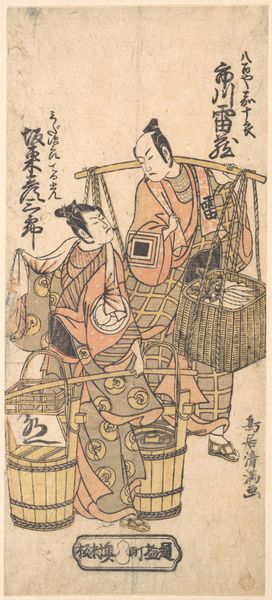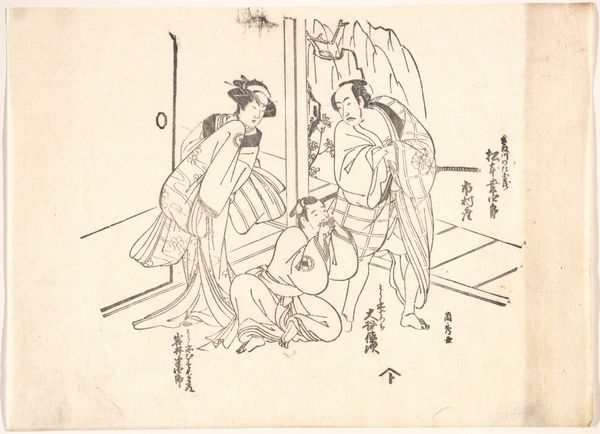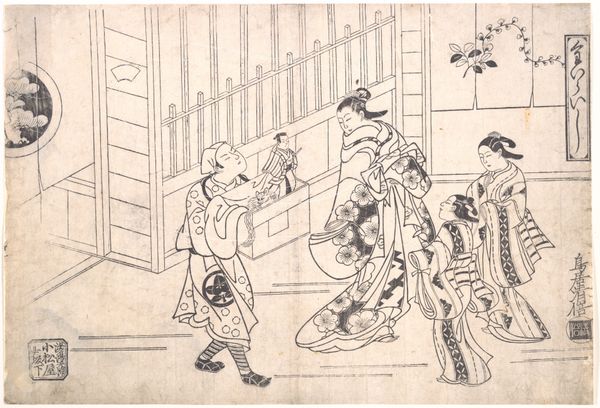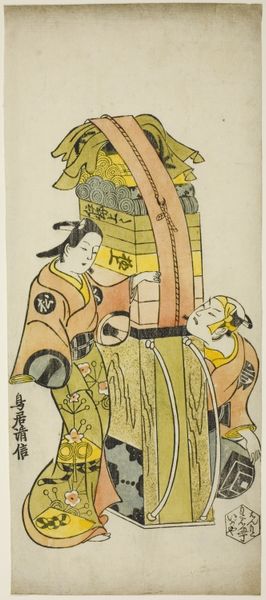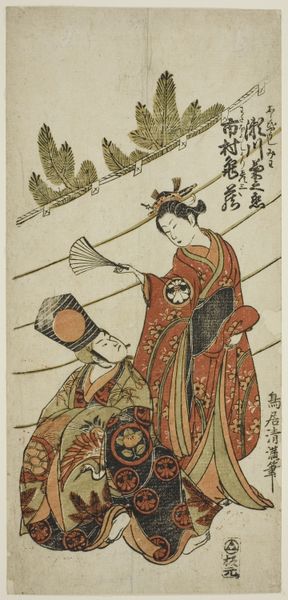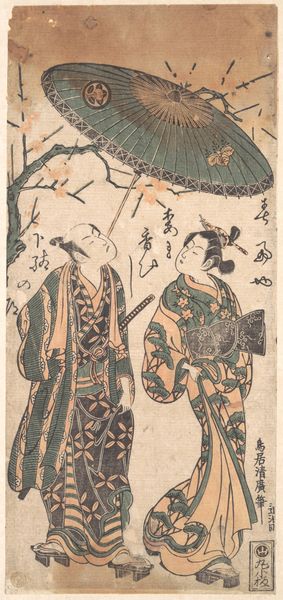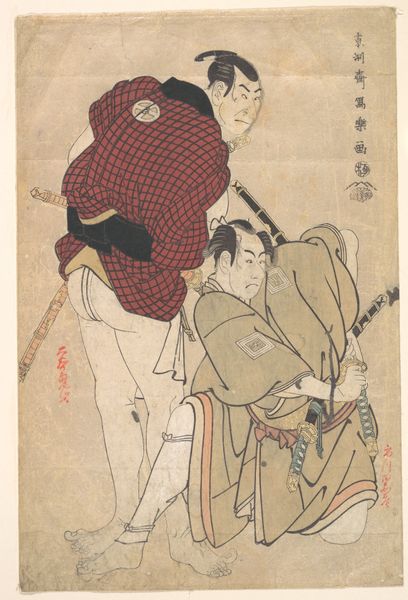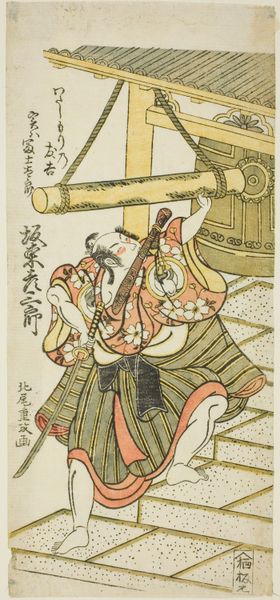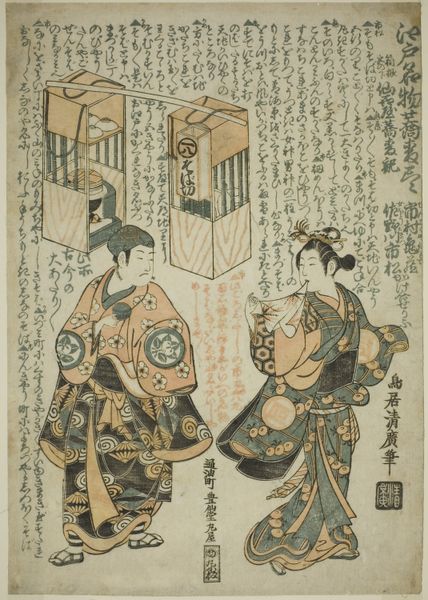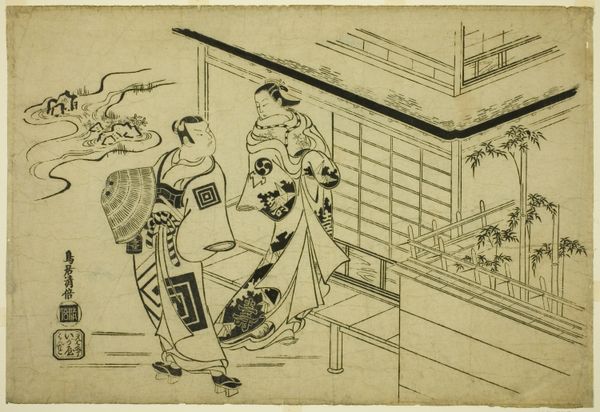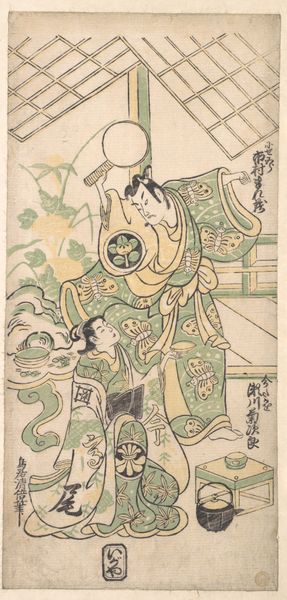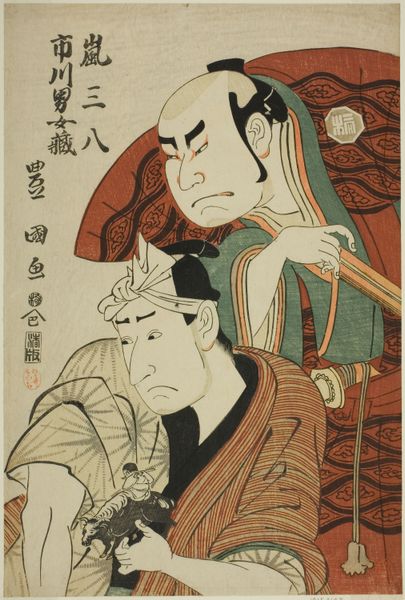
The Actors Otani Oniji I as Soga no Goro and Sanogawa Ichimatsu I as the sister of Yoshinaka in the play "Fuji no Yuki Mitsugi Soga," performed at the Nakamura Theater in the first month, 1746 1746
0:00
0:00
print, woodblock-print
#
portrait
# print
#
asian-art
#
ukiyo-e
#
figuration
#
woodblock-print
#
genre-painting
Dimensions: 31.3 × 14.2 cm (12 5/16 × 5 3/4 in.)
Copyright: Public Domain
This woodblock print was created in 1746 by Torii Kiyonobu II, and it depicts two actors in a scene from the play "Fuji no Yuki Mitsugi Soga," performed at the Nakamura Theater. The print offers a fascinating glimpse into the vibrant world of Japanese Kabuki theater and its connection to the social and cultural life of Edo-period Japan. Kabuki was a popular form of entertainment, particularly among the merchant classes, and prints like these served as both advertisements for upcoming performances and as collectibles for avid fans. The Nakamura Theater, where this play was performed, was a prominent institution in Edo's theatrical scene. Examining the visual codes employed in the print allows us to understand the social dynamics of the time. The actors' costumes, hairstyles, and expressions all convey specific meanings within the context of the play and the broader cultural landscape. Prints were not merely records but active participants in shaping public perceptions of actors and their roles. As historians, we can delve deeper into understanding the print's significance by researching the play itself, the actors involved, and the cultural context in which it was produced and consumed. The meaning of art is contingent on its social and institutional context.
Comments
No comments
Be the first to comment and join the conversation on the ultimate creative platform.

